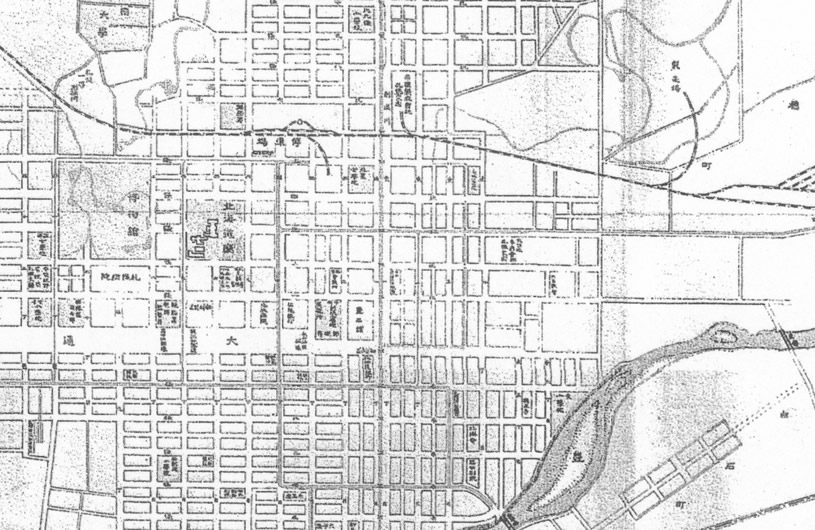
The "Sapporo Grand Map" edited in 1918 by the Sapporo Ward Office (Fukido), excerpt. Courtesy of the Sapporo City Archives

The "Sapporo Grand Map" edited in 1918 by the Sapporo Ward Office (Fukido), excerpt. Courtesy of the Sapporo City Archives
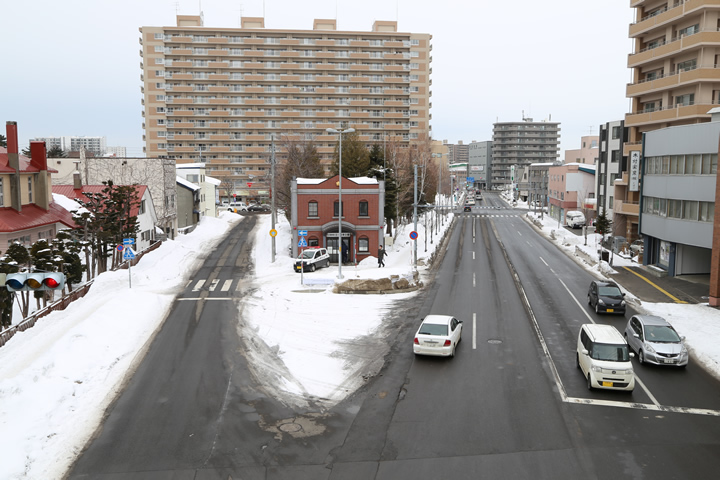
The eastern border of Sosei Higashi is Higashi 8-chome Street.
In the neighborhood near the east border of Sosei Higashi, there are historical buildings that represent the area, For example, the former Catholic Kitaichijo Church was constructed in 1898 using Sapporo softstone, and the present church (located at Higashi 6-chome, Kita 1-jo) was constructed in 1916. These are listed as the Roman Catholic Churches on old maps.
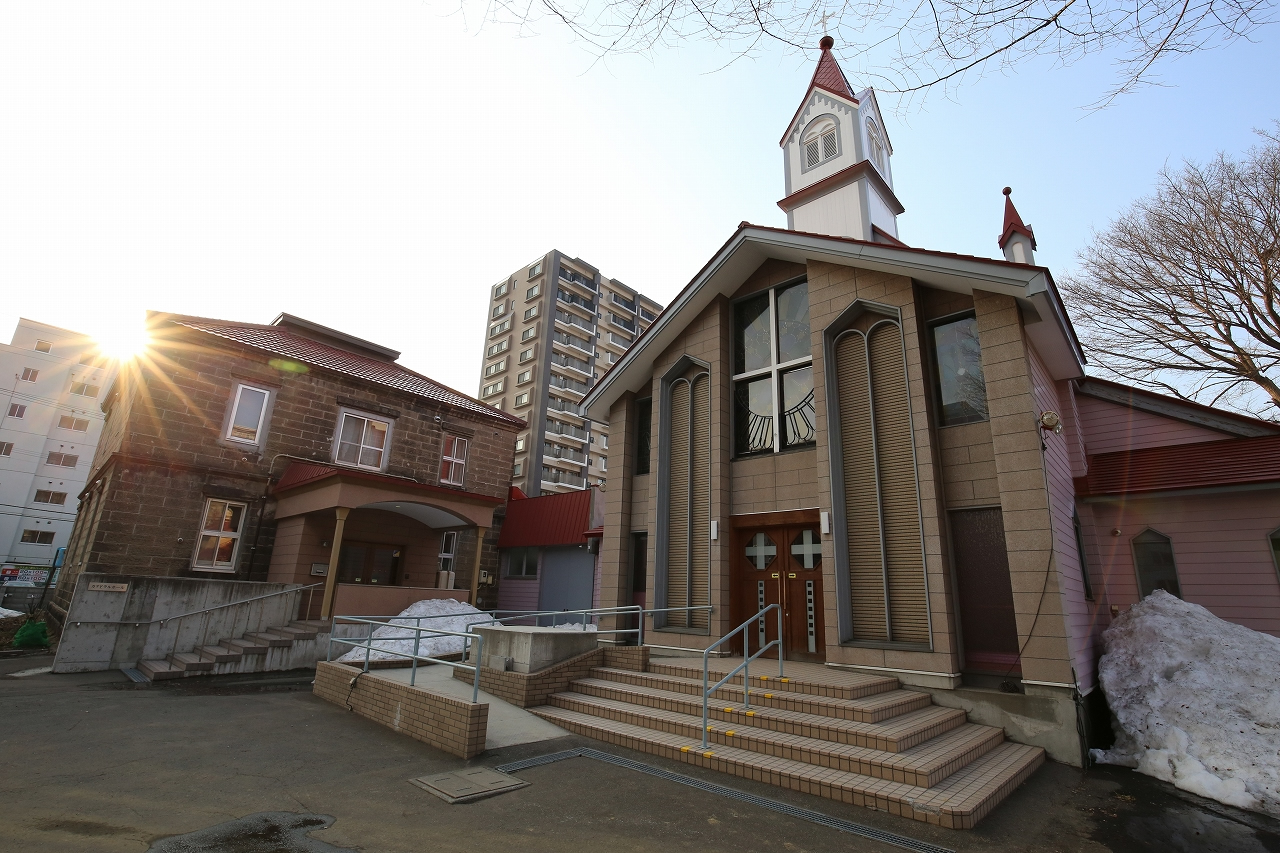
Catholic Kitaichijo Church
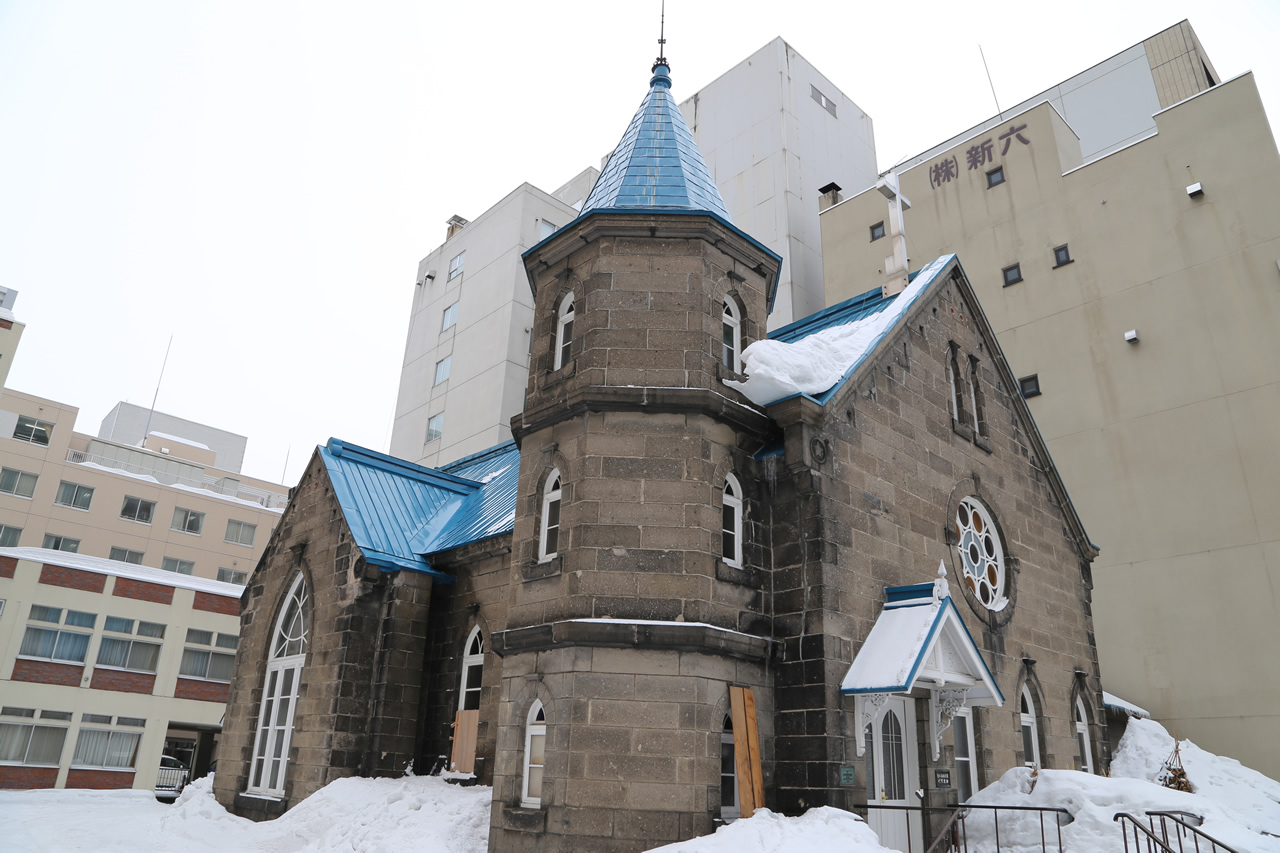
United Church of Christ in Japan, Sapporo Church Chapel
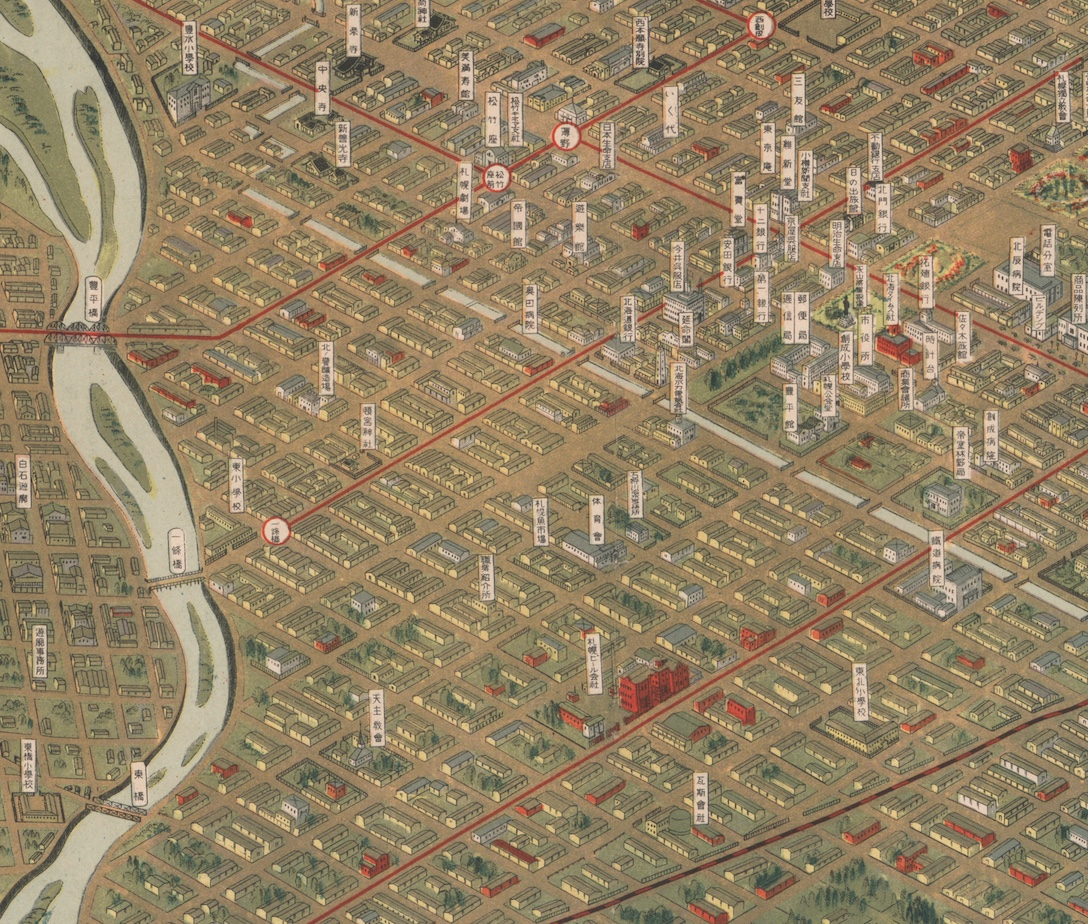
The Sapporo City map was drawn shortly after construction of the Catholic Kitaichijo Church. An overhead view of Sosei Higashi from the northeast, drawn in 1928. The Roman Catholic Church is located on the lower left ("Sapporo Seen From an Airplane"(excerpt) 1928 Yasuda Shumpei (Koekisha), courtesy of Sapporo City Chuo Library
Let's review the dynamic life of Urbain Faurie who laid the foundation for the Catholic Kitaichijo Church.
Urbain Faurie was born in the farming village of Dunieres, in southern France. He studied at the Society Foreign Missions of Paris, was ordained as a priest, and sent to Japan as he hoped. The year was 1873, when the Meiji Government lifted the ban on Christianity. Faurie first went to Niigata, but his preaching did not make progress. On the other hand, a botanist in France asked him to collect Japanese plants, so he began a plant collection of various areas in Japan along with his preaching. In 1878, he was carrying out his work from a base in Hakodate.
In 1881, Faurie arrived in Sapporo, with a population of only 7,500 people. The next year, a temporary church was set up in Higashi 1-chome, Minami 4-jo. Afterward, he preached in Sapporo and the surrounding areas, traveling to Tohoku, Sakhalin, and even to the Kuril Islands over approx. ten years, steadily gaining believers.
In these days, Faurie was commissioned as a correspondent of the National Museum of Natural History (France), and he used the honorarium he received for his plant collection to construct churches throughout Japan. At the Paris Expo held in1889, he received an award in botany from France.
In the mid 1890s, Faurie fell ill and returned to France. It is said that he brought 500kg of plants to the ship and prepared specimens by drying them on the ship. These specimens were later sent to botanists in several countries in Europe and America. After regaining his strength, he returned to Japan. From then he continued to preach and collect plants in Hokkaido and Tohoku areas while based in Aomori.
In 1898, construction of a building containing a priest’s hall and a church using Sapporo softstone was completed in Sapporo. This became the former Catholic Kitaichijo Church building.
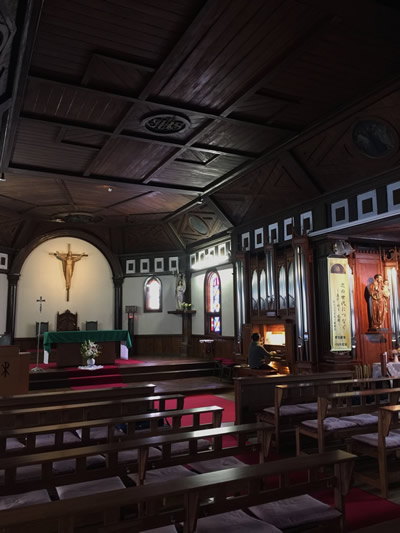
Inside of the Catholic Kitaichijo Church
In 1900, Faurie was honored with the Botany Medal of Honor from the Institute of France. By this time, he had expanded the range to collect plants to the Korean Peninsula and Taiwan. In 1908, he stepped over to Sakhalin along with Father Cornier of the Otaru Church, and opened a mission station in present Yuzhno-Sakhalinsk. The next year, he stayed a long time in Hawaii, devoting his time to plant collection. After being dismissed from his duties in Aomori, he headed to Taiwan, but shortly afterward fell sick, and died in the summer of 1915.
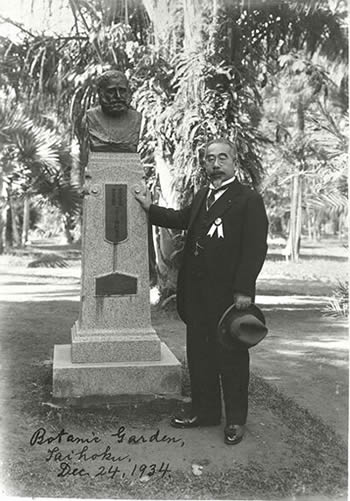
Bust of Father Faurie and Dr. Miyabe Kingo at the Taipei Botanical Garden
(Photograph owned by Hokkaido University library)
In 1916, a year after Faurie's death, a dedication of the present church was held at the Catholic Kitaichijo Church, due to the efforts of parish head at the time, Father Wenceslaus Kinold and others. Kinold was a German missionary known as an educator who established the present Fuji Girl’s School and Sapporo Kosei Junior & Senior High School.
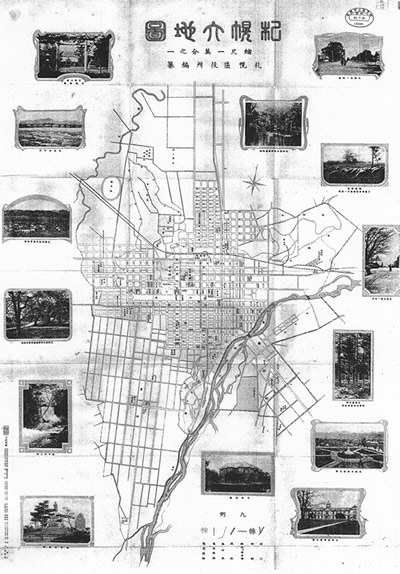
The "Sapporo Grand Map" edited in 1918 by the Sapporo Ward Office (Fukido). Courtesy of the Sapporo City Archives